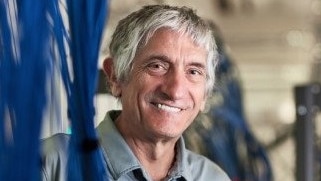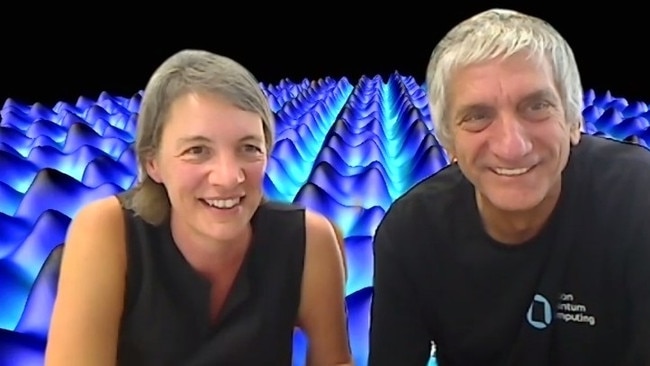Quantum computing firm lures top man from US
Australia has raced to the forefront of the development of quantum computers, snaring arguably the world‘s leading researcher in the field.

Australia has raced to the forefront of the development of quantum computers, snaring arguably the world‘s leading researcher in the field.
Professor John Martinis previously led a Google team that gained world acclaim after demonstrating the power of quantum computers to outperform classical computers, an exercise known as “quantum supremacy”.
He will join forces with Australian quantum computing expert Michelle Simmons from the University of NSW to accelerate the development of a commercial quantum computer.
Professor Simmons is also world-acclaimed, with her team recently demonstrating its approach to building a quantum computer in silicon at atomic scale.
Professor Martinis will join Professor Simmons’ technology start-up Silicon Quantum Computing, in what will be a formidable team. SQC is already regarded as a world leader in atomic fabrication and is the only commercial entity globally that could build a quantum computer harnessing this capability.
“I’m hugely excited to join the team at SQC,” said Professor Martinis. “Building a quantum computer is my lifelong ambition. If we can build one successfully at scale, it will be a transformational achievement with tremendous impact for humankind.”
Speaking after two weeks in quarantine, he told The Australian on Tuesday that Professor Simmons invited him to join SQC after he left Google in April.
Her proposal was “the most interesting one for me’’. He was impressed with her plan to build a quantum computer “atom by atom”. He would be based in Sydney. “This is the most ideal place in the world to be, to learn about semiconductor qubits.”

Predicting how long it could take to build a quantum computer isn’t easy. Professor Martinis said it might happen towards the end of the coming decade; the immediate goal with Professor Simmons was 10 qubits (quantum building blocks) by 2023.
Professor Simmons said the goal was to build 50 qubits as quickly as possible; she said commercial opportunities would open up along the way.
Professor Martinis said the “quantum supremacy” demonstration involved processing data: a quantum computer took five minutes to process what would take a classical supercomputer thousands of years.
Professor Simmons said the experiment showed the promise of quantum computing was “real”. SQC was working with Australian industries to identify the problems quantum computers could help solve. The Commonwealth Bank and Telstra were shareholders, along with governments and the university.
She said the Commonwealth Bank had launched a series of studies of how quantum computing could be applied to finance, and Telstra wanted to know how it would impact on the communications sector.
Simulating the impact of drugs, optimising traffic control and operating delivery systems were other applications.
“We‘re very keen to partner with those external users to have problems that need solving, figuring out what are the needs … and getting the hardware to the point that it actually can demonstrate those outcomes,” she said.
Professor Simmons said a 10-year road map was in place “and we’ve just got to go fast”. “I’ve been terribly impressed with the corporates in Australia, they were at the forefront looking for this technology and they found us.”
She said SQC had “quite a bit of money already” but would raise more capital in 2021.



To join the conversation, please log in. Don't have an account? Register
Join the conversation, you are commenting as Logout